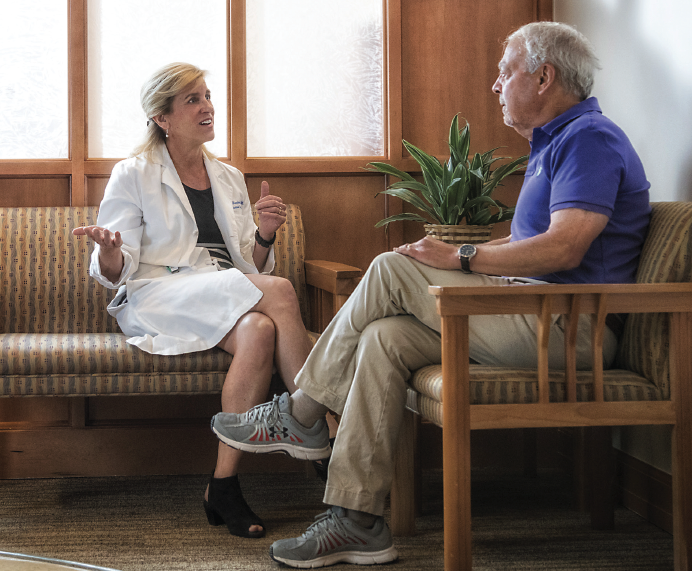Expertise & Collaborative Care
Our Shaw Cancer Center physicians are highly skilled across all specialties involved in care for our patients. Strong collaboration between urologists, oncologists, radiation oncologists, pathologists, and radiologists drive a multidisciplinary discussion to provide comprehensive care to each person seen with prostate cancer.
You're not alone, Robbin Miller, RN, one of our nurse navigators, will assist you by helping navigate your journey from diagnosis to treatment. Robbin will assist you with scheduling doctor appointments, coordinating imaging with radiology, and communicating to your care team all your needs.
Radiation Oncology
Under the leadership of Dr. Patricia Hardenbergh, The Shaw Cancer Center utilizes state of the art technology to administer radiation therapy that targets and kills cancer cells. Each treatment plan is customized specifically for each patient. Types of radiation therapy we use to treat prostate cancer include Intensity-Modulated Radiation Therapy (IMRT), Volumetric Modulated Arc Therapy (VMAT), and Stereotactic Body Radiation Therapy (SBRT).
Medical Oncology
Dr. Erin Schwab directs care for prostate patients who require or would benefit from systemic therapies like Androgen Deprivation Therapy (ADT). Androgens, (such as testosterone), are produced mainly in the testicles and stimulate prostate cancer cells to grow. ADT utilizes oral or injected medications that lower the levels of male hormones in the body. While not curing prostate cancer, lowering androgen levels often stops or significantly slows the growth of prostate cancer cells. At times chemotherapy is used to treat prostate cancer as well.
Urology
The Shaw Cancer Center prostate program also encompasses a network of urologists who provide specialized knowledge regarding the male urinary tract and offer both medical and surgical treatments. Our urology partners include:
- Colorado Mountain Medical
- The Urology Clinic











